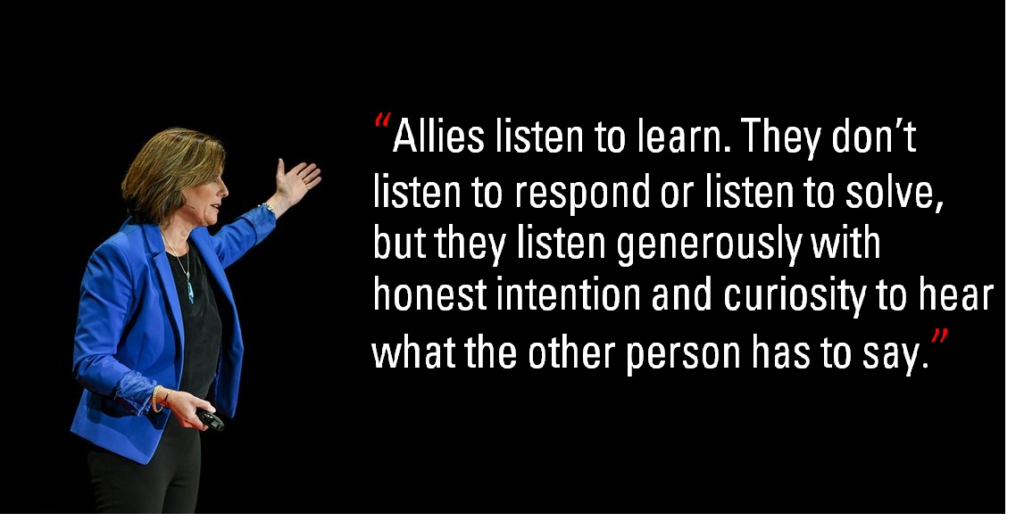
As part of my series on ALLIES, today we are going to talk about the first L in ALLIES, Listening. What does it really mean to listen as an ally?
I would like to introduce you to two people who will share their story with you about how listening made a huge difference in building that ALLYSHIP. My esteemed colleague, Mitra Best, who is an entrepreneur, technologist, future-maker and innovation leader. As PwC’s Technology Impact Leader, Mitra leads the application of advanced technologies to address critical environmental and societal problems. Mitra has held leadership positions in innovation and technology for the past two decades, responsible for creating new technology platforms and business models that deliver results to organizations, the ecosystem of stakeholders, and the workforce. She has successfully led large-scale initiatives in both private and public sectors focused on sustainable new growth and efficiency models through innovative applications of technology. Today, Mitra will share her story of allyship and how it has made a difference in her experience at PwC.
I would also like to introduce you to her ally, Tim Ryan who is US Chairman and a Senior Partner at PwC. Previously he served as the Vice Chairman, having responsibility for the PwC’s strategy function and stakeholder relationships including investor relations, regulatory affairs, public policy, corporate responsibility, marketing and sales and human capital. Tim has over 25 years of diversified experience serving clients in the financial services industry in the U.S. and internationally.
Both of these individuals have led impressive businesses and hold executive roles at PwC. But we are going to play Monday morning quarterback and take you back to a time in their history when they were just connecting and the road that was paved by Tim’s intention to become an ally for Mitra.
let’s first talk about Listening. What does it mean to listen with intention and become an ally through that listening? There are several elements that a great listener employs:
- They listen to learn. They don’t listen to respond or listen to solve, but they listen generously with honest intention and curiosity to hear what the other person has to say.
- They ask questions – not to challenge the credibility of what that other person has to say, but to better understand their perspective
- Genuine listening requires focus, sincerity, empathy, a refusal to interrupt and a genuine value for the other person’s experience
- It means you quiet the other “chatter” in your head and become fully present for the other person
- It means you “check in” to ensure you have clarity and understanding of what they are saying
- It means you convey appreciation, interest and empathy for the other person’s perspective
Listening requires energy. It is a valuable and intentional act. When you genuinely listen to another person without trying to “solve” their problems but just to hear them, you build trust, respect and allyship.
In Mitra’s case, she says: “A male senior leader who “saw” me and the value I could bring as a software engineer to an accounting/business consulting firm, advocated for me with our Board and sponsored me to become the first-ever partner at PwC in a purely technology role, setting a precedent in the firm’s partner admission process and helping me crack a glass ceiling at the same time. “
When Mitra talks about “being seen”, she is talking about “being heard”. To quote @Tarana Burke “we can’t see people if we don’t hear them” – when you don’t hear someone they become invisible.”













